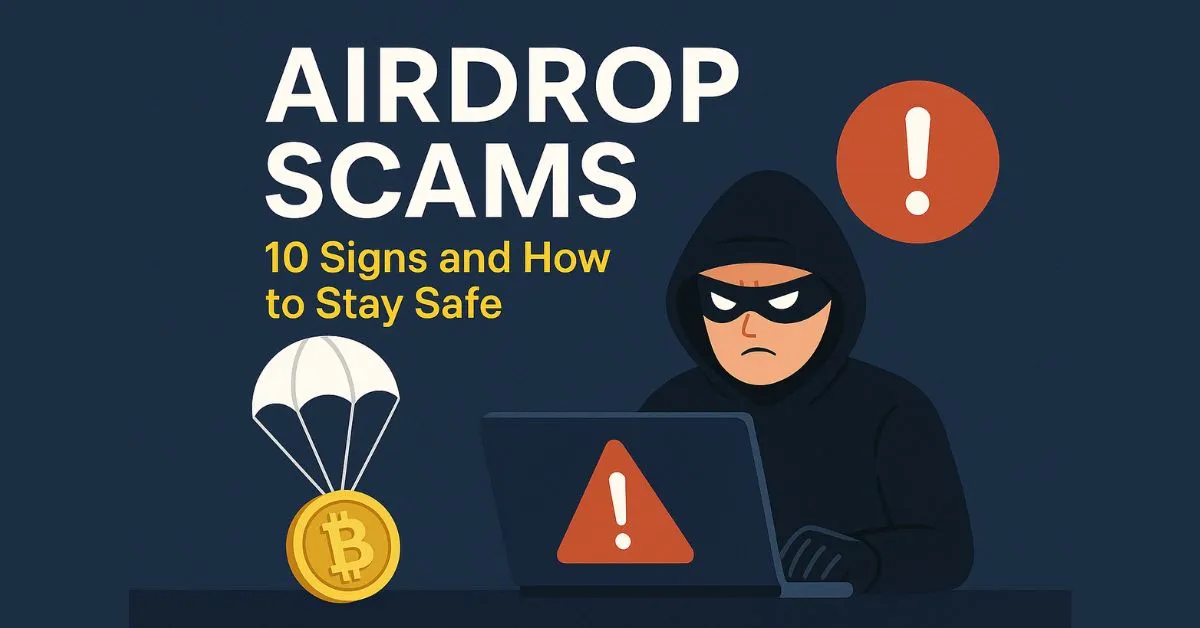
10 Signs to Identify Airdrop Scams and How to Stay Safe
1. Why Airdrops Are Easy Targets for Scams?
Airdrops are a popular method for cryptocurrency projects to distribute free tokens, aiming to attract users and build communities. However, the appeal of "free tokens" often lowers people's guard. Bad actors exploit this by launching sophisticated scams, causing millions of dollars in losses globally. This article will help you identify 10 common signs of airdrop scams and how to protect your crypto wallet.
2. Lack of Announcement from Official Channels
No Clear Verification Information
Scam airdrops are often not posted on official websites or social media accounts. Instead, they spread through unsolicited Telegram or Discord messages, or fake ads.
Note: Always visit the project's official website or communication channels to verify airdrop legitimacy before participating.
3. Request for Private Key or Recovery Phrase
The Most Dangerous Red Flag
No legitimate airdrop will ever ask for your private key or seed phrase. Sharing this sensitive information means risking your entire wallet.
Tip: Never share private credentials—even with so-called "support teams."
4. Demanding Gas Fees or Upfront Payments
Free, But You Have to Pay?
Many fake airdrops ask users to pay small amounts of ETH, BNB, or USDT to "unlock rewards." Once paid, nothing is delivered.
Reminder: Legitimate airdrops are free and may only ask for simple actions like filling out forms or following social accounts.
5. Suspicious Websites and Fake URLs
Traps Behind Links
Phishing sites often use URLs that mimic real ones with minor tweaks (e.g., binannce[.]com). Once a user connects a wallet, scammers may gain full control.
Advice: Double-check URLs. Use browsers with security warnings or anti-phishing plugins.
6. Poor Grammar and Pushy Language
Exploiting FOMO Psychology
Scam messages often use phrases like "Claim now! Only 30 minutes left!" and are filled with spelling or grammar errors.
Be Careful: Real projects communicate professionally and transparently.
7. Fake Comments and Social Proof
Illusion of Trust
Scam airdrops often flood posts with comments like "I just received 500 USDT!" or "This really works!"—but these are usually bots or fake accounts.
Action: Don’t trust comments alone. Always research the project independently.
8. Unclear or Unlisted Tokens
No One Knows Where It Came From
Scam tokens often lack whitepapers, aren’t listed on CoinMarketCap or CoinGecko, and have no real community.
Tip: If you can’t find solid info about a token, avoid it.
9. Token Approval Traps (Approval Scam)
Silent Permission to Drain Funds
Some airdrops ask for token approvals under the guise of claiming rewards, but you unknowingly allow them to spend your assets anytime.
Solution: Use tools like revoke.cash to check and remove suspicious token permissions.
10. Redirecting to Malicious DApps
One Signature Could Drain Your Wallet
Fake DApps may prompt users to sign contracts that appear harmless, but the signature gives full access to your assets.
Action: Only interact with verified DApps. Always read transaction prompts carefully.
11. Unrealistic Rewards
If It Sounds Too Good to Be True, It Probably Is
“Get 1,000 USDT instantly with no action required!” — Such offers are usually scams.
Experience: Legitimate projects typically offer modest rewards with clear, transparent conditions.
12. Vigilance is Your Best Defense
Airdrops can be a great way to earn free tokens and discover new projects. However, stay alert against suspicious offers. Always verify sources, secure your wallet, and never share your private keys. In the world of Web3, safety must always come first!